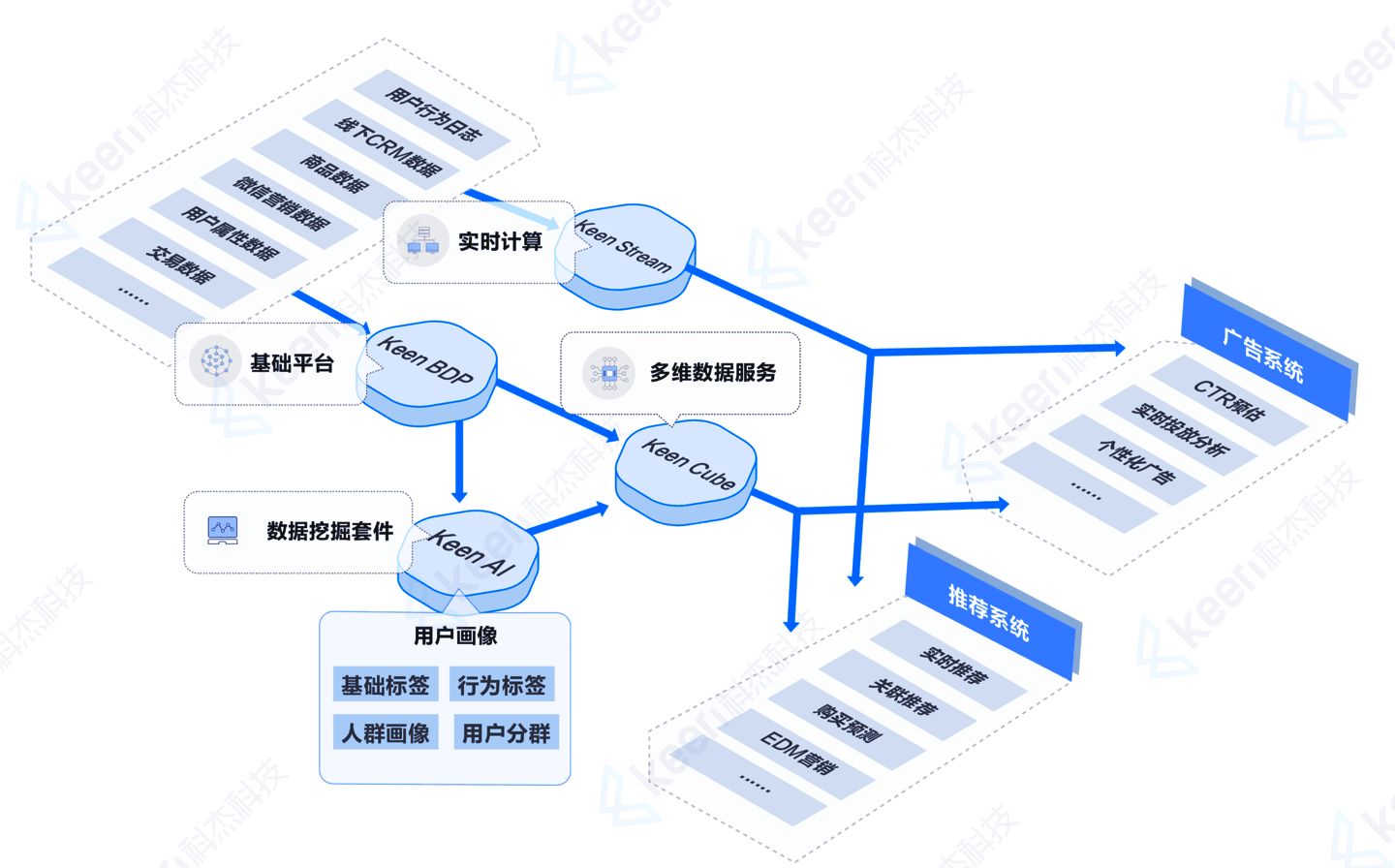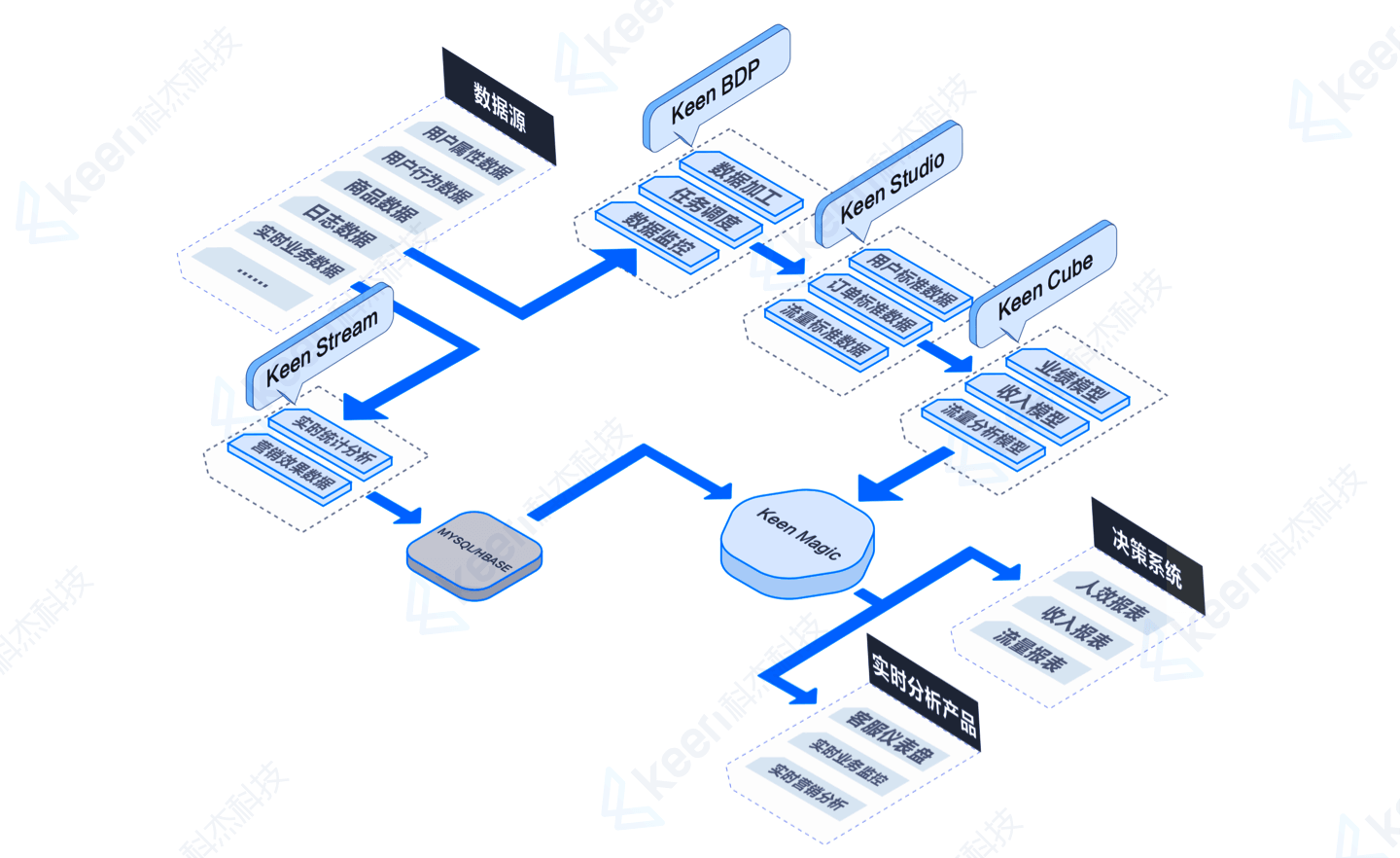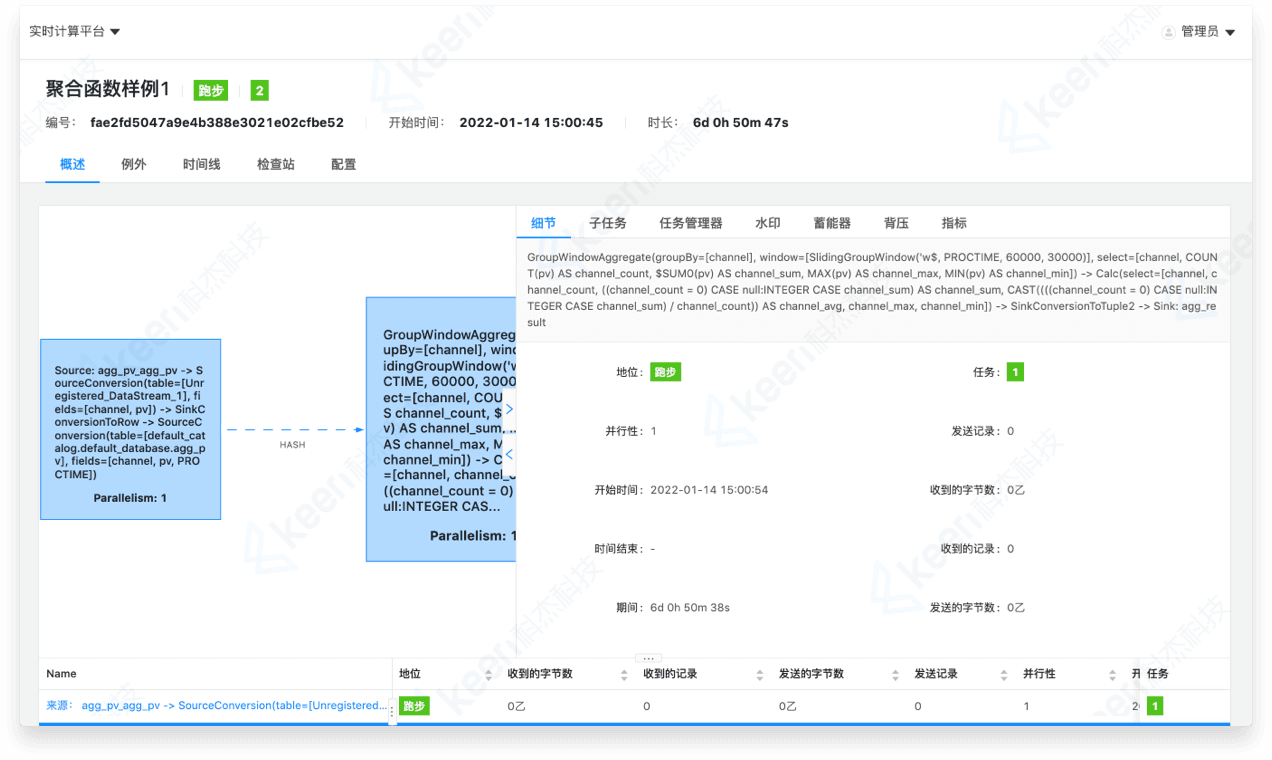It offers a fully visual, user-friendly, high-throughput, highly fault-tolerant, one-stop streaming data computation and processing platform. It supports SQL for real-time data cleaning, data analysis, and data synchronization, along with comprehensive monitoring mechanisms to ensure the accuracy of stream processing. It can support various enterprise real-time data processing scenarios such as the construction of real-time enterprise data warehouses, real-time data dashboards, real-time reporting, and more.
Product Features
-

Powerful Real-time Processing Capabilities
Tasks support million-level throughput with second-level latency. Automatic fault tolerance ensures high availability, and a single cluster can scale to thousands of nodes.
-

>Data Security
A comprehensive message tracking framework and sophisticated transactional processing ensure that data computations are neither duplicated nor lost.
-

One-Stop Managed Service Capabilities
One-stop, fully managed streaming data processing capabilities, supporting full-link streaming data computation, as well as monitoring and alerting for task health.
-

Rich and Flexible
Offers job development through SQL and JAR upload methods; provides custom UDF function capabilities, supporting horizontal and vertical configuration adjustments for cluster task resources.
-

Rich and Flexible
Provides SQL-based data analysis and processing capabilities, lowering the barrier for streaming data analysis and processing.
-

Comprehensive Monitoring
Offers comprehensive task operation and maintenance monitoring functions, enabling timely warnings and adjustments to the health status of tasks.
Features
Rich Visual Task Editing Capabilities
It supports automatic recognition of Flink SQL keywords, auxiliary compilation functions such as data preview and one-click data source reference, code version rollback, custom UDF functions, automatic code structure recognition, and provides standalone data debugging features for jobs. You can view debugging results and runtime logs online without affecting online data.
Task Monitoring
It provides comprehensive monitoring of all job runtime information, enabling engineers to promptly assess job health status and perform tuning operations through the analysis of task runtime status and topology diagrams.
Visual Cluster Dashboard Monitoring
The real-time computing platform offers extensive Kafka cluster data monitoring, including cluster monitoring dashboards, topic management, consumer applications, cluster monitoring, and alerting functions. This aids administrators in monitoring and managing Kafka dynamics and promptly alerting on data backlog issues for consumer applications.
Application Scenarios
-

Real-time Data Warehouse Construction
The real-time computing platform is used to clean, merge, structure, compute, and layer model data generated during business operations. The real-time computation results are output and stored in the analytical database Keen ADB, providing service support for applications and being suitable for the construction of enterprise real-time data warehouses.
-

Real-time Data Analysis/Real-time Metrics Monitoring
The real-time computing platform continuously computes and writes user data collected from the frontend into a message queue, and continuously outputs the computation results to the enterprise's real-time data dashboard for real-time display and tracking of sales GMV. This is applicable to enterprise real-time data dashboards, real-time risk control systems, vehicle anomaly monitoring, and industrial equipment anomaly detection.
-

Real-time Recommendations
By computing relevant business metrics in real-time and integrating real-time business data, the platform achieves near-real-time data flow of business data. Combined with actual business production scenarios, it enables real-time business dashboard analysis and monitoring, supporting enterprises in real-time operations, analysis, and decision-making. This is suitable for real-time recommendations, advertising placements, and geographical location analysis.
Success Cases
Learn more,
start your data intelligence journey now
Contact Us (09:00-18:00)
Technical Support
support@keendata.com











